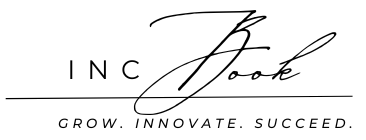Starting a business doesn’t always require a huge budget. With a little creativity and strategic planning, you can launch a profitable venture with less than $1,000! By focusing on businesses that have low upfront costs and leveraging free or inexpensive resources, you can keep your initial expenses down while still setting yourself up for success. Here’s a step-by-step guide to help you turn your small investment into a viable business.
Pick a Low-Cost Business Idea 🎯💡
Starting a business on a budget begins with selecting the right type of business—something that doesn’t require a big upfront investment in inventory, space, or equipment. The goal is to focus on ideas that leverage your skills, interests, and available resources to keep initial costs low. Here are some top choices for low-cost businesses:
- Service-Based Businesses 🧹
Service businesses are often low-cost because they don’t involve physical products or a large workspace. Think about businesses like cleaning, pet-sitting, tutoring, or lawn care. These require basic supplies—often things you already own. Plus, you can scale up your offerings as your client base grows. - Freelance and Remote Work 💻
If you have a skill you can offer remotely, such as graphic design, writing, digital marketing, or consulting, freelancing is a great low-cost start. With a laptop and internet connection, you can begin right from home. Platforms like Upwork and Fiverr make it easy to connect with clients, allowing you to build your reputation without needing to spend on advertising. - Digital Products or Online Courses 📚
If you’re knowledgeable in a specific area, creating digital products like e-books, templates, or courses can be an affordable, scalable option. With tools like Canva and Teachable, you can create and sell digital content with minimal costs. Plus, digital products only need to be created once, and they can continue to generate income over time. - Reselling and Dropshipping 📦
Reselling thrifted items on platforms like eBay or Poshmark, or starting a dropshipping business, can be an inexpensive way to begin in e-commerce. With dropshipping, you act as a middleman between suppliers and customers—meaning no need to manage inventory or shipping yourself.
Pro Tip: Go with something that aligns with your skills or interests! 🎉 This not only makes running your business more enjoyable, but it also gives you a natural advantage, as you’ll be bringing some expertise to the table right from the start.
Keep Startup Costs Low 💸
Once you’ve chosen a business idea, it’s time to make the most of your $1,000 by keeping startup costs down. This means using free or low-cost resources wherever possible and being strategic about your spending. Here are some essential tips to help you stretch your budget:
- Use Free or Low-Cost Tools 🛠️
Take advantage of free tools to cover your business essentials. For example, Canva is great for designing logos, social media graphics, and marketing materials without needing pricey design software. Google Workspace provides free email, document sharing, and organization tools. Need a website? Platforms like Wix and WordPress offer free or affordable options for basic sites. - Market on Social Media 📱
You don’t need a big advertising budget to promote your business. Social media platforms like Instagram, Facebook, and LinkedIn are powerful tools for connecting with potential clients or customers. Start by creating profiles and sharing content related to your business. Engage with followers, join groups in your industry, and post regularly to build a following organically. - Outsource Selectively 🔄
Outsourcing can save you time and let you focus on your strengths, but it doesn’t have to break the bank. Consider outsourcing small tasks on platforms like Fiverr or Upwork, where you can find freelancers for graphic design, admin tasks, or social media management at reasonable rates. Prioritize only essential tasks so you can keep most of the work in-house. - Start with Minimal Inventory 📦
If your business involves selling products, consider starting with a small selection to minimize your initial costs. Test the market with a few products, gauge interest, and then expand your inventory as demand grows. For reselling or dropshipping, stick to a manageable range of items rather than overloading yourself from the start.
Pro Tip: Keep track of all your expenses right from the beginning, no matter how small. Knowing exactly where your money goes will help you make informed decisions and stay within your budget. 💰
Focus on Building a Strong Brand 🌟
With a limited budget, building a memorable brand can set you apart from the competition and attract customers without costly advertising. A strong brand includes not only your visual identity but also your messaging and customer experience. Here’s how to build a brand that resonates without breaking the bank:
- Develop a Unique Brand Identity 🎨
Start by choosing a business name, color palette, and logo that reflect your business’s personality and appeal to your target audience. You can use tools like Canva for designing logos and creating consistent graphics. Keep things simple but memorable—your brand should be easy for people to recognize and remember. - Craft Your Brand Story 📖
Share the story behind your business. Why did you start it? What problem are you solving? When customers know the reason behind your brand, they’re more likely to feel connected to it. Write a brief story or mission statement and feature it on your website, social media, and even in your product descriptions. - Create Consistent Content 📸
Consistent, high-quality content is key to building trust and engagement with your audience. Share valuable and relevant content on your website, blog, or social media that aligns with your brand’s message. This could include tips, tutorials, behind-the-scenes looks, or insights related to your industry. - Engage with Your Audience 💬
Customer relationships are at the heart of a strong brand. Engage with followers on social media, respond to comments, and ask for feedback. Building these relationships creates loyalty and can help spread word-of-mouth about your business—a powerful tool when you’re on a budget!
Pro Tip: Think of branding as an investment in long-term success. The stronger your brand, the easier it is to attract and retain customers, reducing the need for heavy advertising expenses. 📈
Start Selling and Scaling Up 🚀
With your business idea, low-cost setup, and brand in place, it’s time to start selling and setting yourself up for growth. Starting small is perfectly fine—your main focus should be on getting those first customers, learning from their feedback, and gradually scaling up as demand grows.
- Launch with a Small Group of Customers 👥
Instead of aiming for mass reach right away, focus on a small group of initial customers. They can provide valuable feedback on your products or services, helping you refine your offerings before expanding. Reach out to friends, family, or community groups that align with your target market and offer discounts or early-bird deals to encourage sign-ups. - Collect and Use Customer Feedback 📝
Customer feedback is invaluable, especially in the early stages. Ask your first customers for honest feedback on their experience with your product or service. This will help you identify any issues, make improvements, and understand what people love about your business. Positive feedback can also provide great testimonials for your website or social media. - Expand Your Offerings Gradually 📈
Once you have some traction, consider expanding your product or service offerings to attract more customers. Keep an eye on what’s working well and what customers are requesting. Gradual growth helps you manage your budget and workload while expanding your reach without overwhelming yourself. - Reinvest Profits Back Into the Business 💵
As you start making sales, consider reinvesting a portion of your profits to fuel growth. This could mean upgrading your equipment, enhancing your website, or investing in targeted advertising to reach a broader audience. Reinvestment allows you to grow sustainably while sticking to your initial budget.
Pro Tip: Celebrate small wins! 🎉 Each new sale, customer review, or milestone is an important step forward. Acknowledging these moments keeps you motivated and engaged with your business journey.



